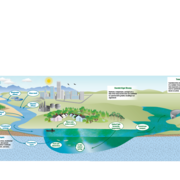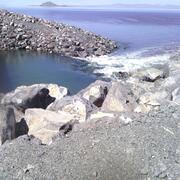Unified Core Technology Team
Unified Core Technology Team
Descriptions of specialized laboratories and capabilities across the United States supported by the Environmental Health Program.
Chemistry and Microbiology are at the Forefront of Environmental Health Research
Chemistry and Microbiology are at the Forefront of Environmental Health Research
- Algal Toxins and Environmental Research Laboratory
- Environmental Chemistry Core Technology Team
- Michigan Bacteriological Research Core Technology Team
- Microbial Biogeochemistry Core Technology Team
- Organic Chemistry Research Core Technology Team
- Organic Geochemistry Research Core Technology Team
- Per- and Polyfluoroalkyl Substances (PFAS) Core Technology Team
Understanding and Tracking of Contaminant, Occurrence, Fate and Movement in Water Resources
Understanding and Tracking of Contaminant, Occurrence, Fate and Movement in Water Resources
Exposure and Effects of Environmental Pollutants on Aquatic and Terrestrial Ecosystems
Exposure and Effects of Environmental Pollutants on Aquatic and Terrestrial Ecosystems
Filter Total Items: 36
Tracking Toxins at the Coastline: A National Look at Harmful Algal Toxins in U.S. Coastal Waters
This study is a major step forward in understanding how harmful algal blooms, which are often associated with lakes and rivers, can also affect coastal environments. It provides important baseline information for scientists, public health officials, and environmental managers.
From Stream to Spider: How PFAS Move Through Aquatic and Terrestrial Food Webs
Per- and polyfluoroalkyl substances (PFAS) are persistent synthetic chemicals that accumulate in the environment and living organisms. A USGS study examined how different PFAS compounds move through a stream ecosystem and are transferred from aquatic to terrestrial food webs. The findings documented that not all PFAS behave the same once they enter the environment, leading to differences in...
Bioenergy and Pesticides: Lessons from the AltEn Bioenergy Plant
Ethanol production from seed corn, while reducing waste and promoting renewable energy, can have environmental and health implications. A USGS study on a former bioenergy plant that received pesticide-coated seeds used for ethanol production, revealed that the process led to contaminated wastewater and solid residue, resulting in elevated pesticide levels in nearby surface waters even after the...
Helping Secure Our Nation’s Food Supply: The Intersection of Agriculture, Health, and Environment
Agriculture is vital to the U.S. economy, supplying food, fibers, fuels, and jobs. Ensuring the quality of our natural resources is essential for keeping our food safe and plentiful. The USGS studies environmental factors affecting food security and offers valuable insights to reduce health risks, ensuring a safer food supply and a healthier environment.
Dust from the Great Salt Lake dry lakebed: a possible health risk for communities in northern Utah
By analyzing dust samples in northern Utah, the USGS is providing crucial insights about the importance of water and lakebed management to mitigate dust pollution and protect vulnerable communities in northern Utah.
USGS Environmental Health Program: Integrating Science for Public Health and Resource Management
The USGS Environmental Health Program seeks to understand how environmental factors, especially contaminants and pathogens, influence human health and ecosystems. It focuses on studying the distribution and effects of toxic substances, environmental stressors, and their pathways. The program prioritizes collaboration with State, Federal and local governments; Tribes; non-government organizations...
Leading the Way: Specialized Laboratory Contributions to Environmental Health
The Environmental Health Program features a Unified Core Technology Team comprised of multiple laboratories with specialized expertise that support the overall program research assessing actual and perceived risks from environmental contaminants and pathogens. Individual Core Technology Teams work closely with the Integrated Science Teams to ensure current and emerging techniques are being used to...
By
Ecosystems Mission Area, Contaminant Biology, Environmental Health Program, Toxic Substances Hydrology, California Water Science Center, Columbia Environmental Research Center, Eastern Ecological Science Center, Kansas Water Science Center, Maryland-Delaware-D.C. Water Science Center, New England Water Science Center, New Jersey Water Science Center, Upper Midwest Water Science Center, Utah Water Science Center, Wetland and Aquatic Research Center
Algal and Environmental Toxins Research Laboratory — Lawrence, Kansas
About the Laboratory The Environmental Health Program collaborates with scientists at the Organic Geochemistry Research Laboratory (OGRL) in Lawrence, Kansas, to develop and employ targeted and non-targeted analytical methods for identification and quantitation of known and understudied algal/cyanobacterial toxins. The laboratory contructed in 2019 is a 2,500 square foot modern laboratory facility...
Environmental Health: Science to Support Natural Resource Use
The Environmental Health Program integrates multidisciplinary research to tackle the environmental challenges that impact the nation's natural resource assets. By providing comprehensive research and data, the program assesses both actual and perceived risks associated with environmental contaminants and pathogens while supporting a variety of uses of our natural resources.
Natural Solutions for Reducing PFOS Pollution in Our Environment
Per- and polyfluoroalkyl substances (PFAS) are a group of over 14,000 different man-made compounds that are widely used in various industrial and consumer products and linked to various health issues. Perfluorooctanesulfonic acid (PFOS) is a persistent synthetic chemical within the PFAS group, recognized for its widespread use and persistence in the environment. The U.S. Geological Survey is...
Revolutionizing Water Quality Assessment: Chemical Pollutants Alter Bacterial Metabolism
USGS scientists have advanced methods to measure bacterial activity in environmental waters. Their research showed that when bacteria naturally in the water are exposed to substances like pharmaceuticals, herbicides, and antimicrobials, their normal functions are disrupted. This finding suggests that monitoring bacterial activity could provide early warnings about potential problems with water...
A National Predictive Model for PFAS Occurrence in Groundwater
In October of 2024, USGS Scientist’s published a study where they created a model to predict PFAS occurrence in groundwater at the depths of drinking water supplies. This model can help guide our partners to sample areas where PFAS in drinking water could be an issue for the public.
By
Ecosystems Mission Area, Water Resources Mission Area, Contaminant Biology, Environmental Health Program, Toxic Substances Hydrology, California Water Science Center, Eastern Ecological Science Center, Lower Mississippi-Gulf Water Science Center, New England Water Science Center, New Jersey Water Science Center, New Mexico Water Science Center, New York Water Science Center, Pennsylvania Water Science Center, South Atlantic Water Science Center (SAWSC), Western Ecological Research Center (WERC)













